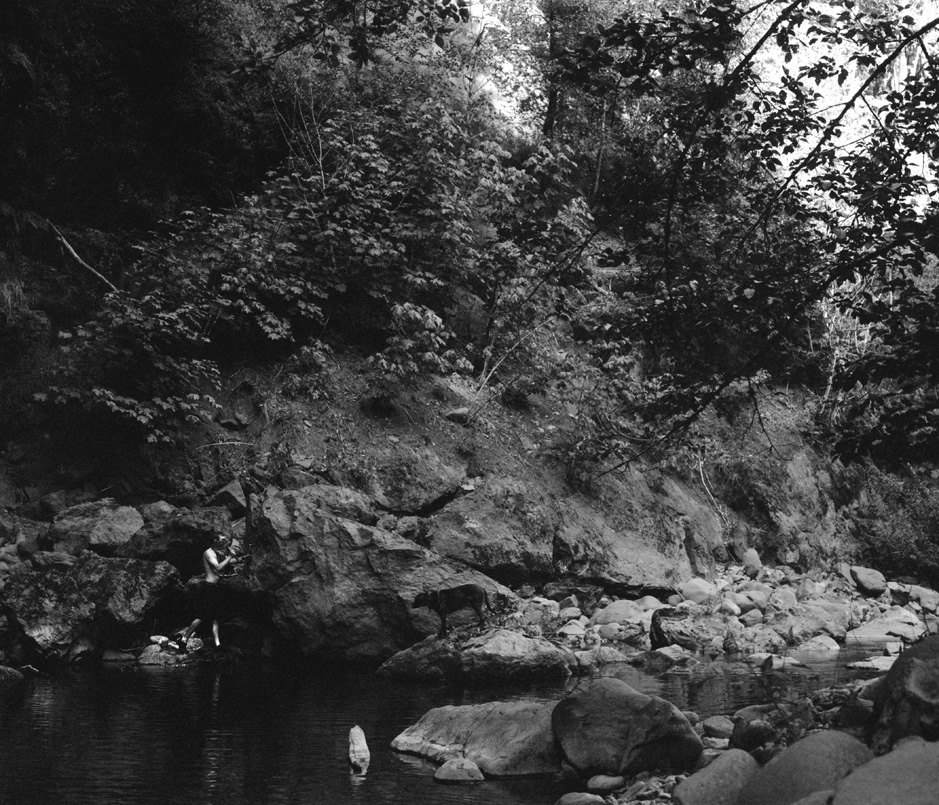
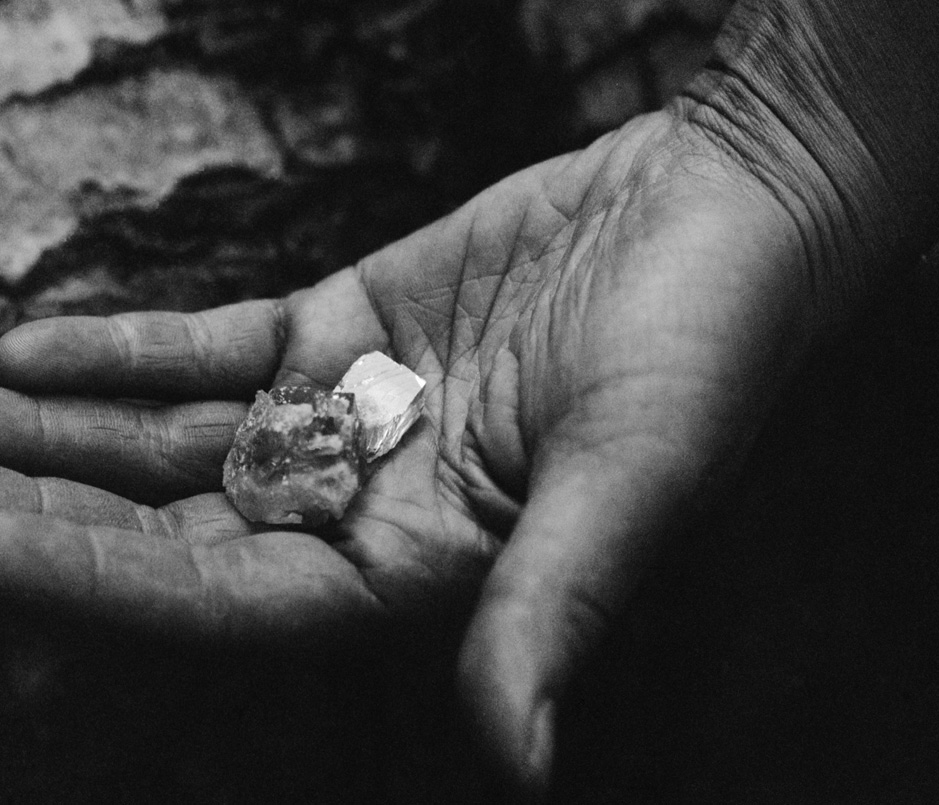


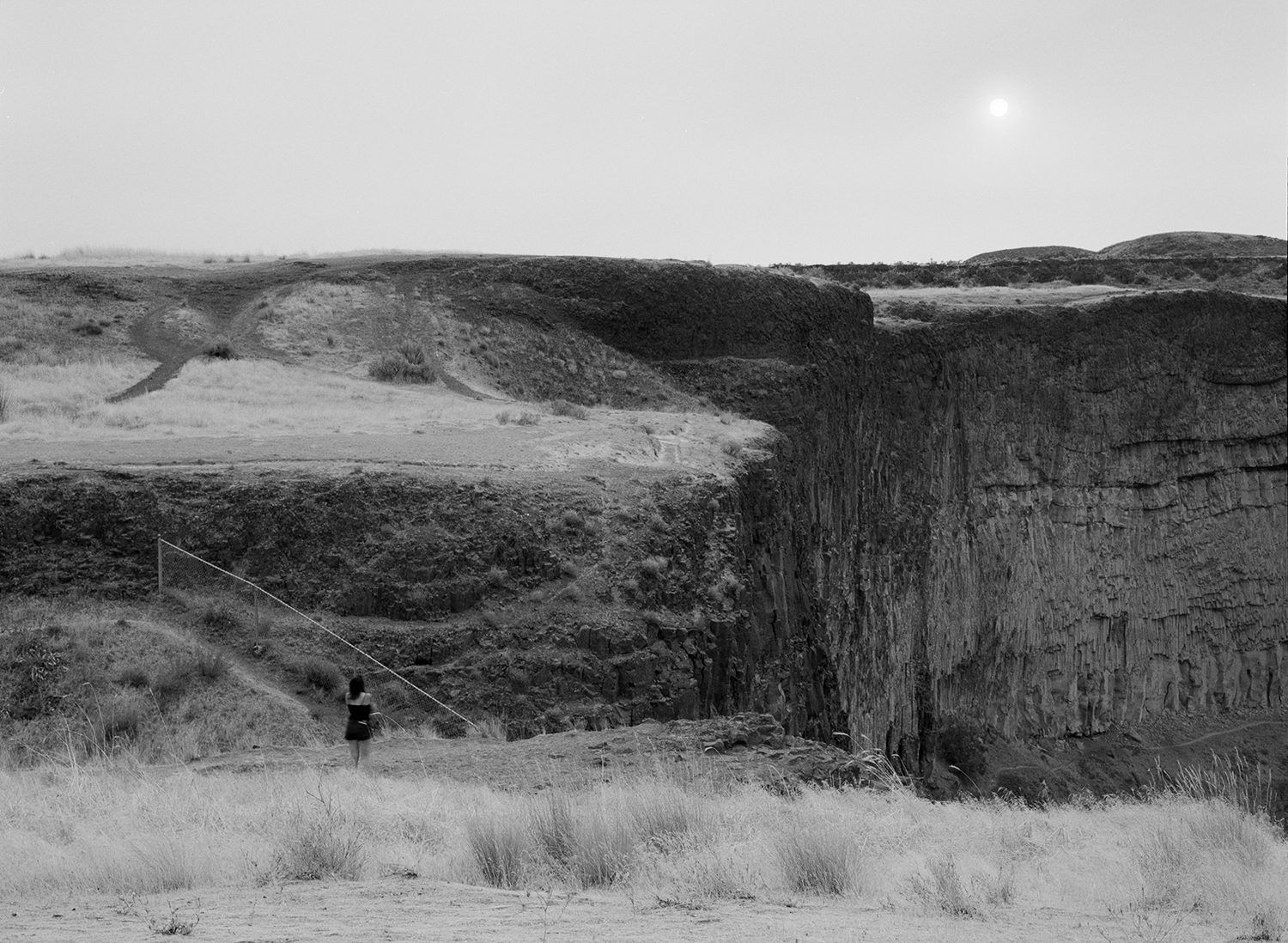

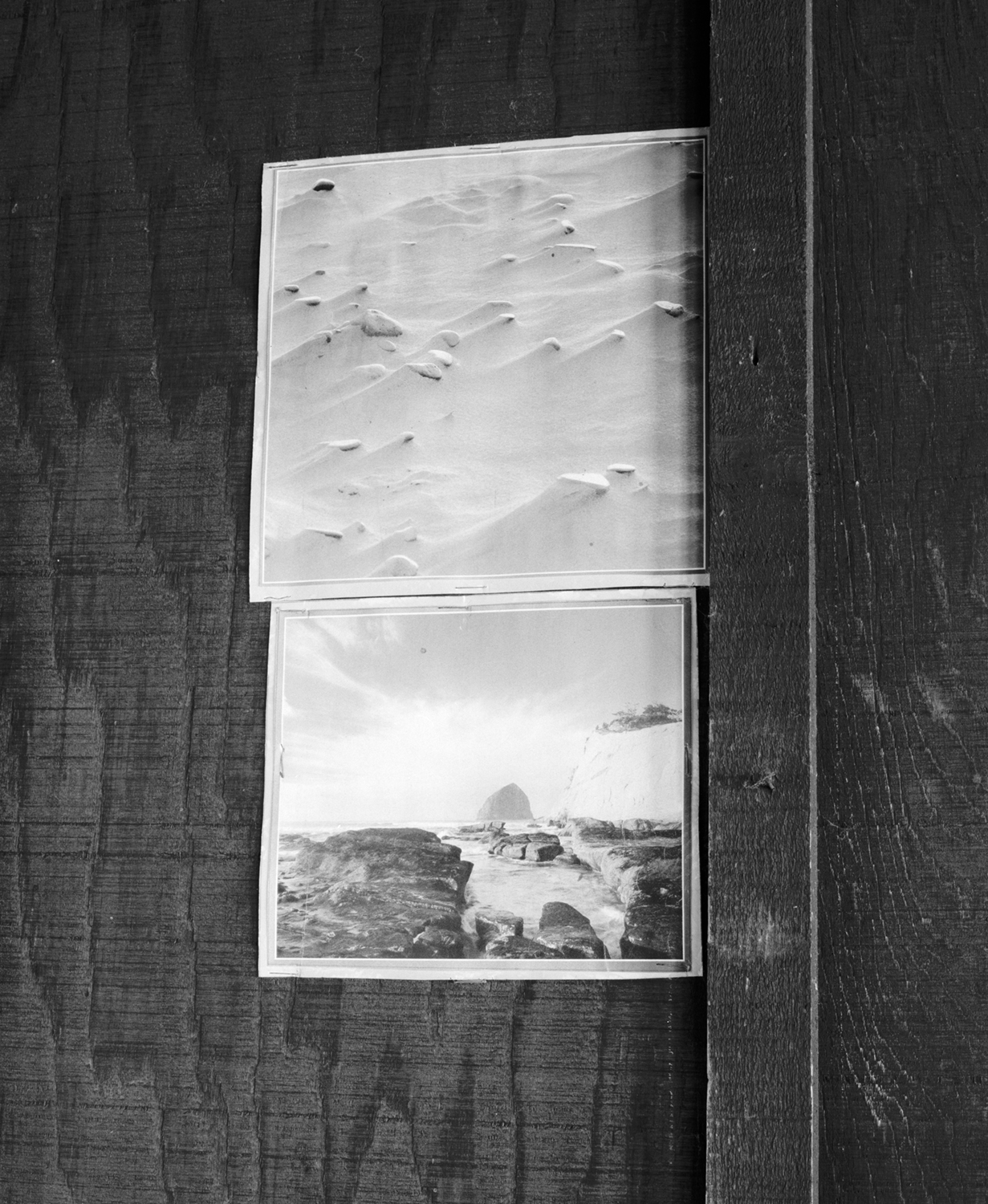
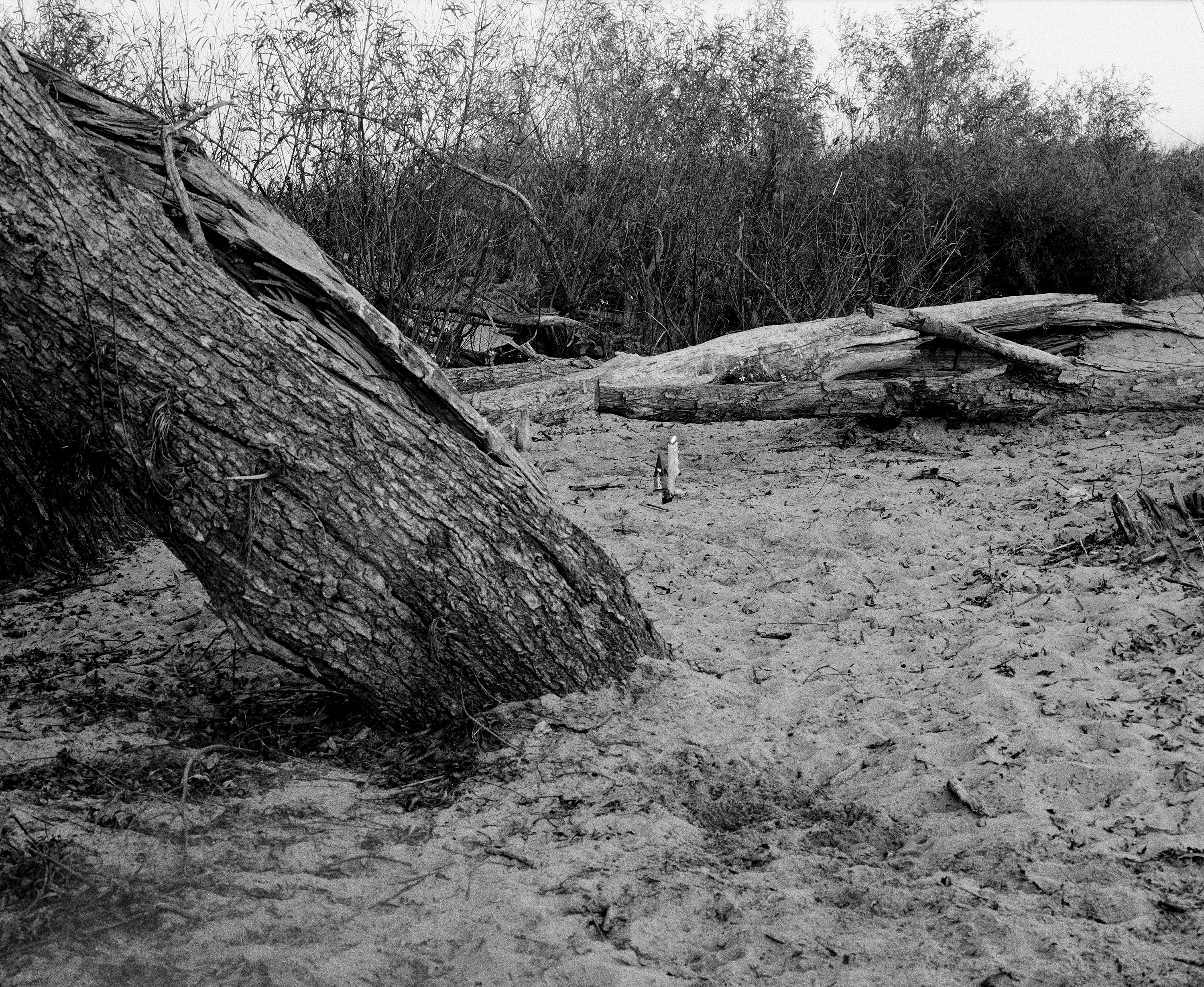

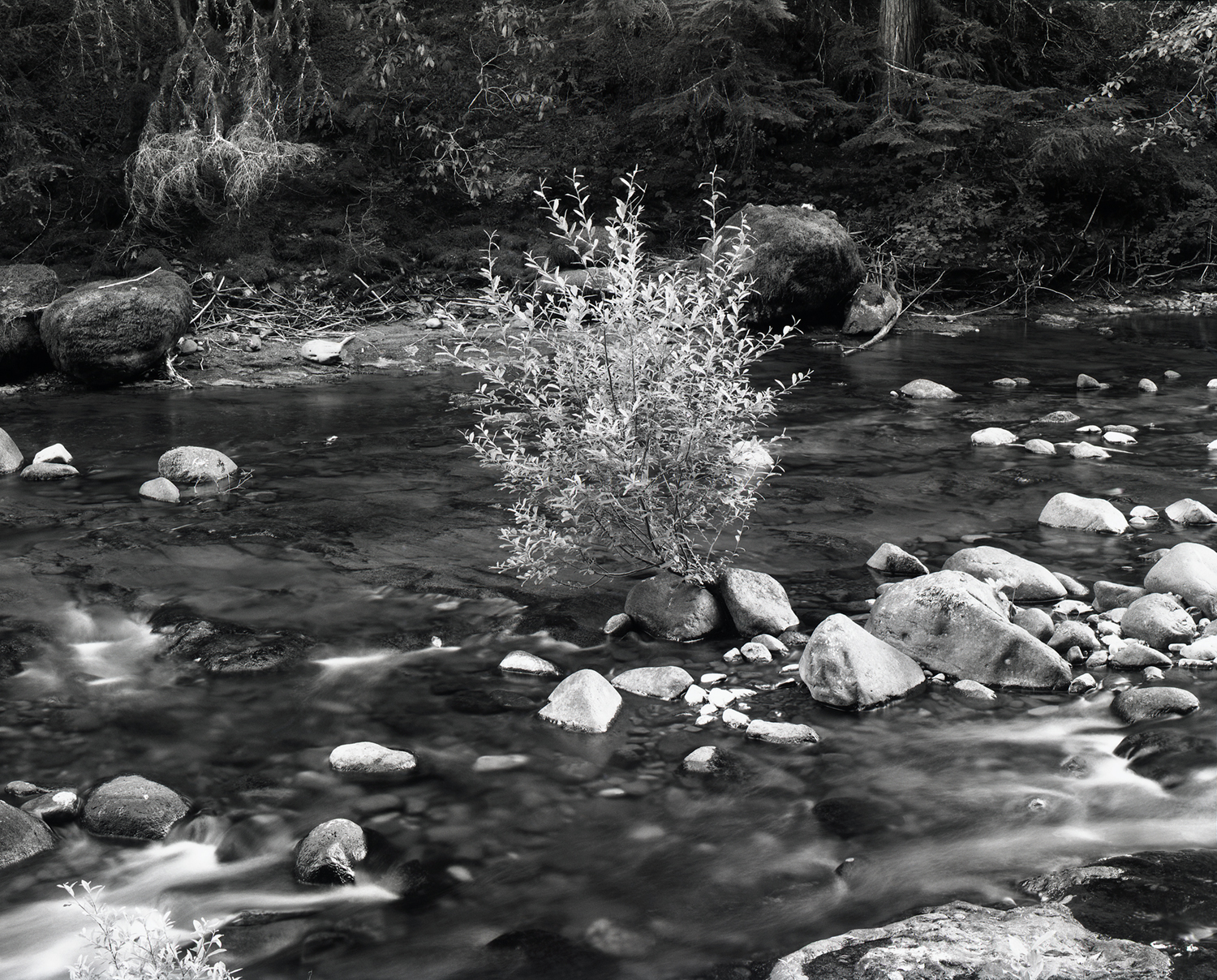


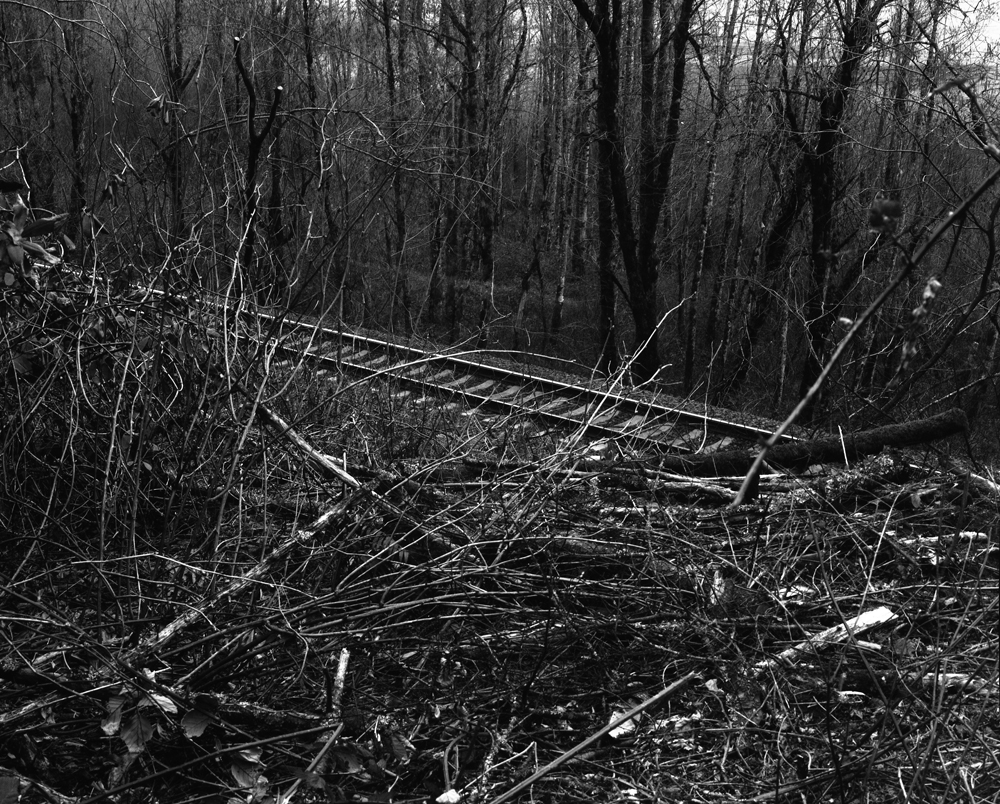
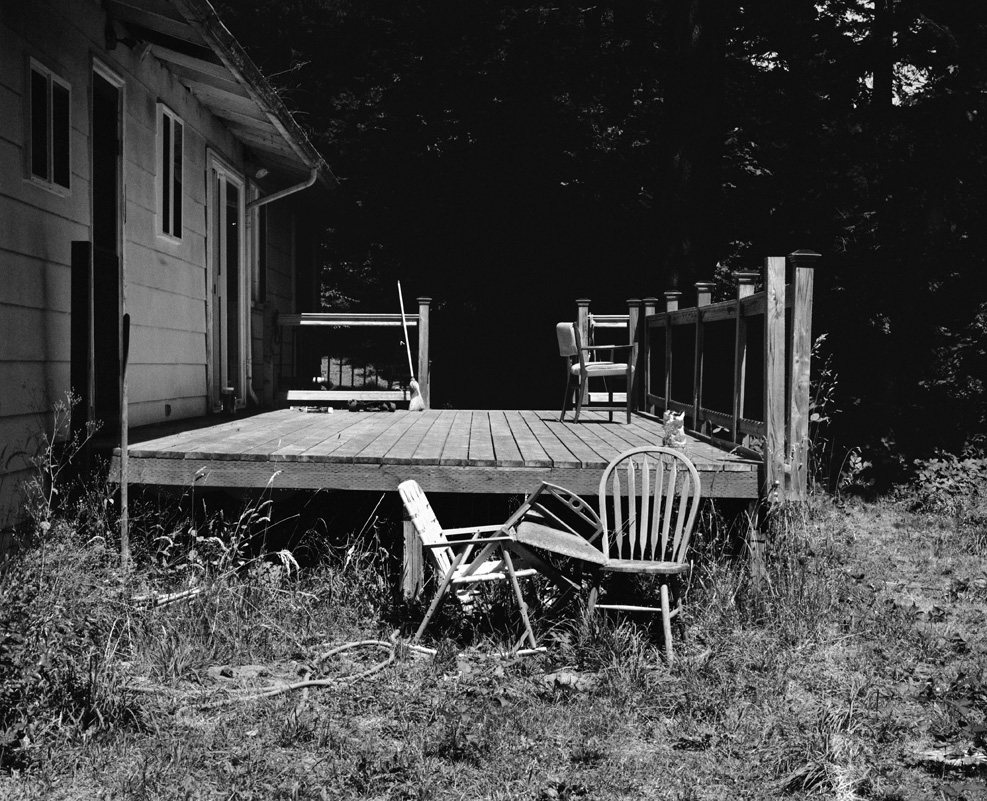

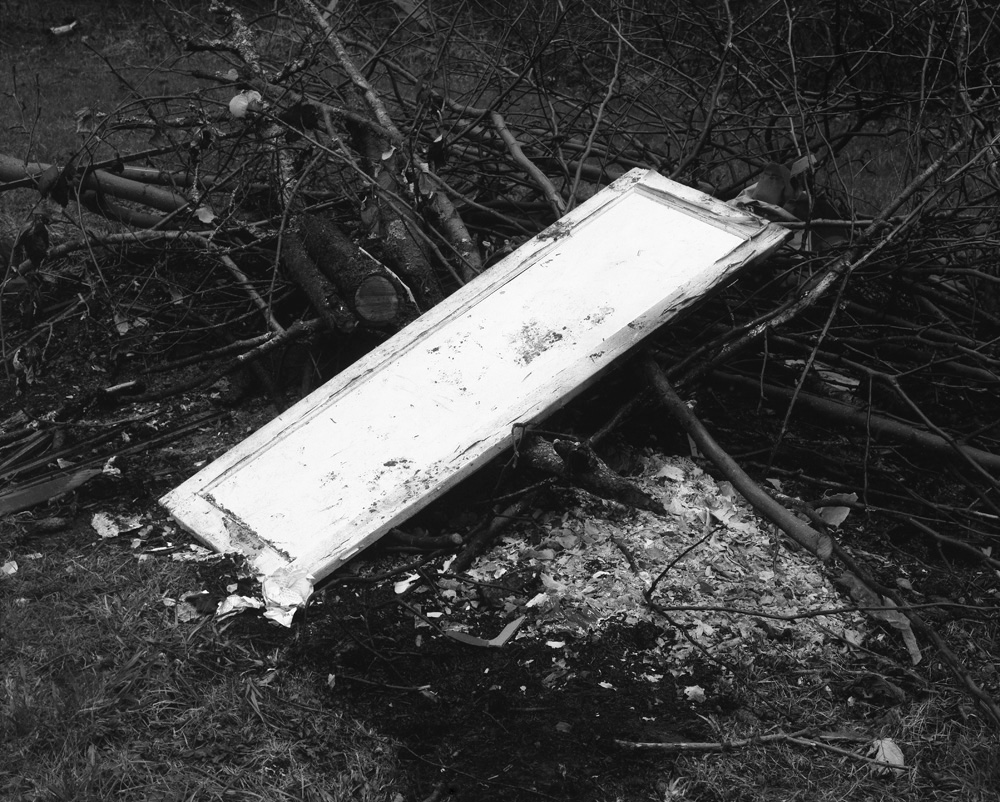
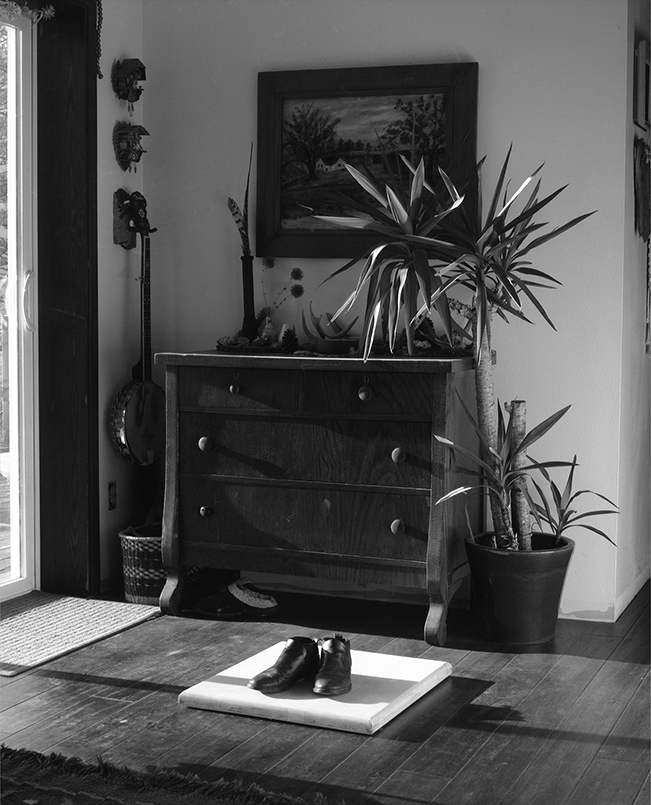




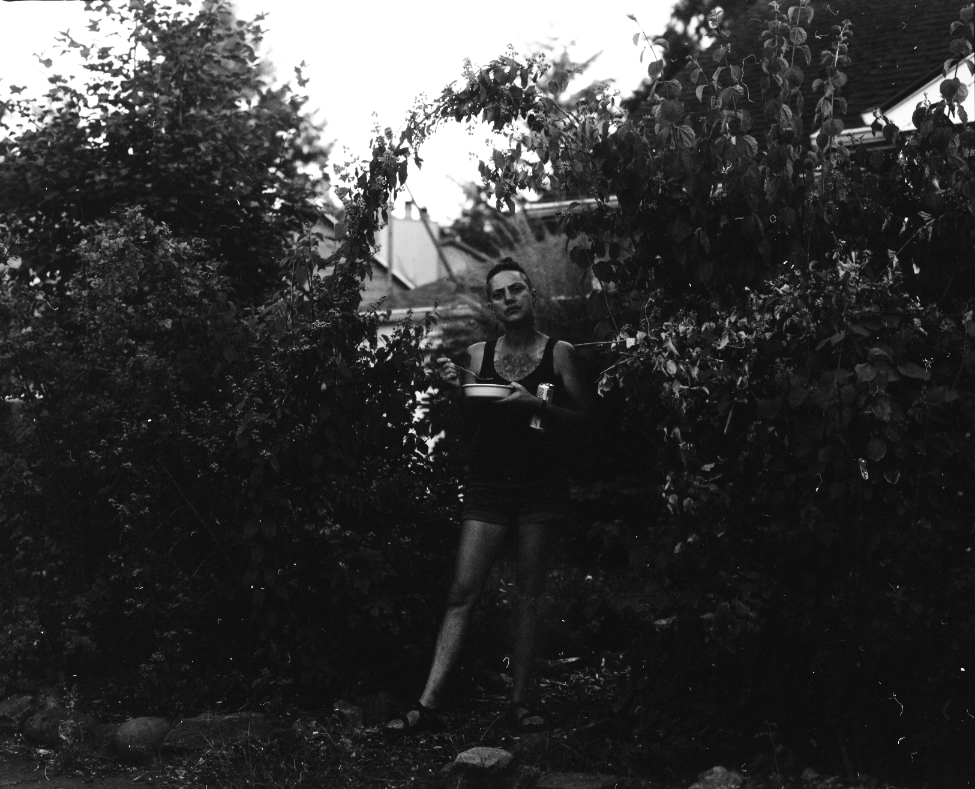

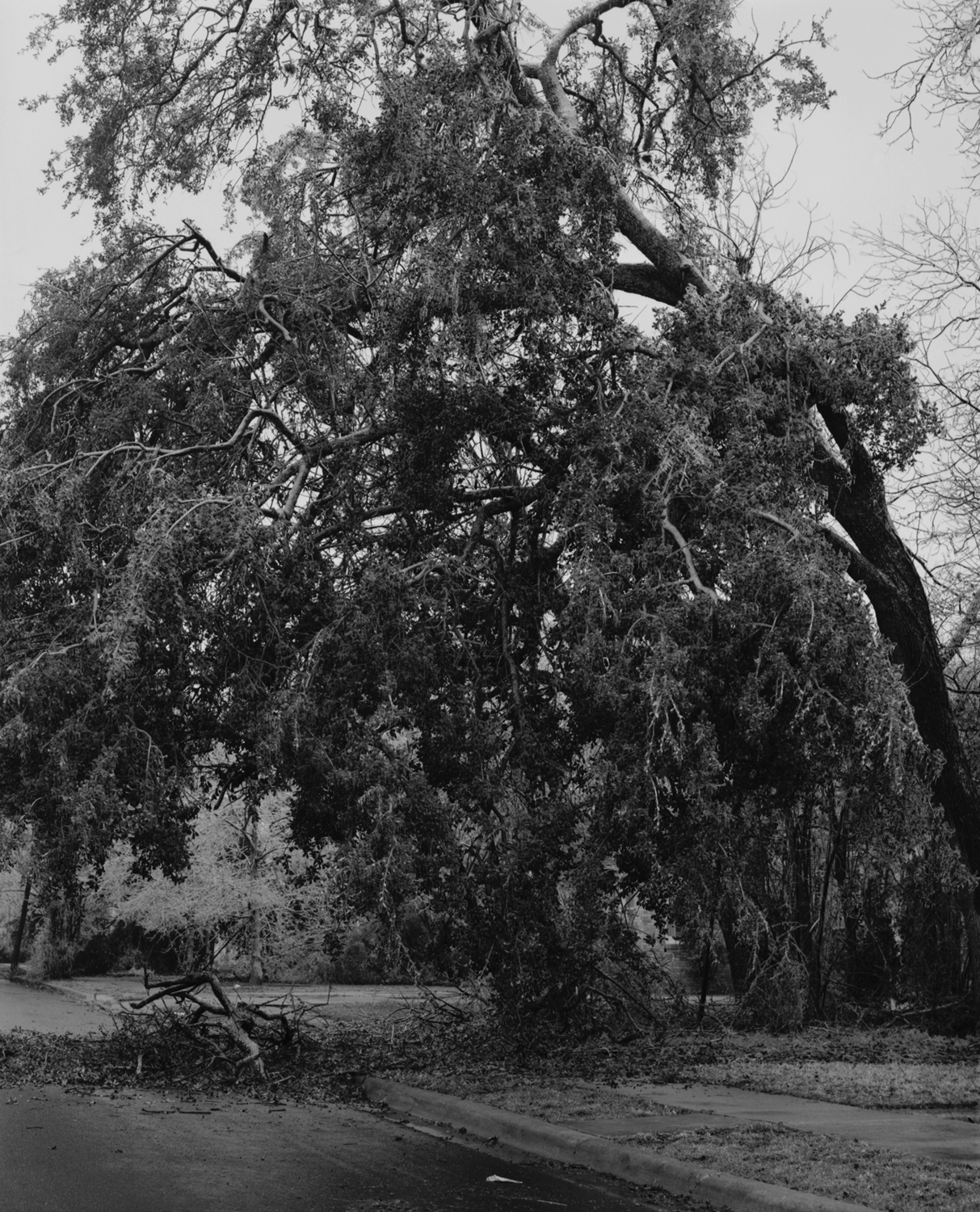

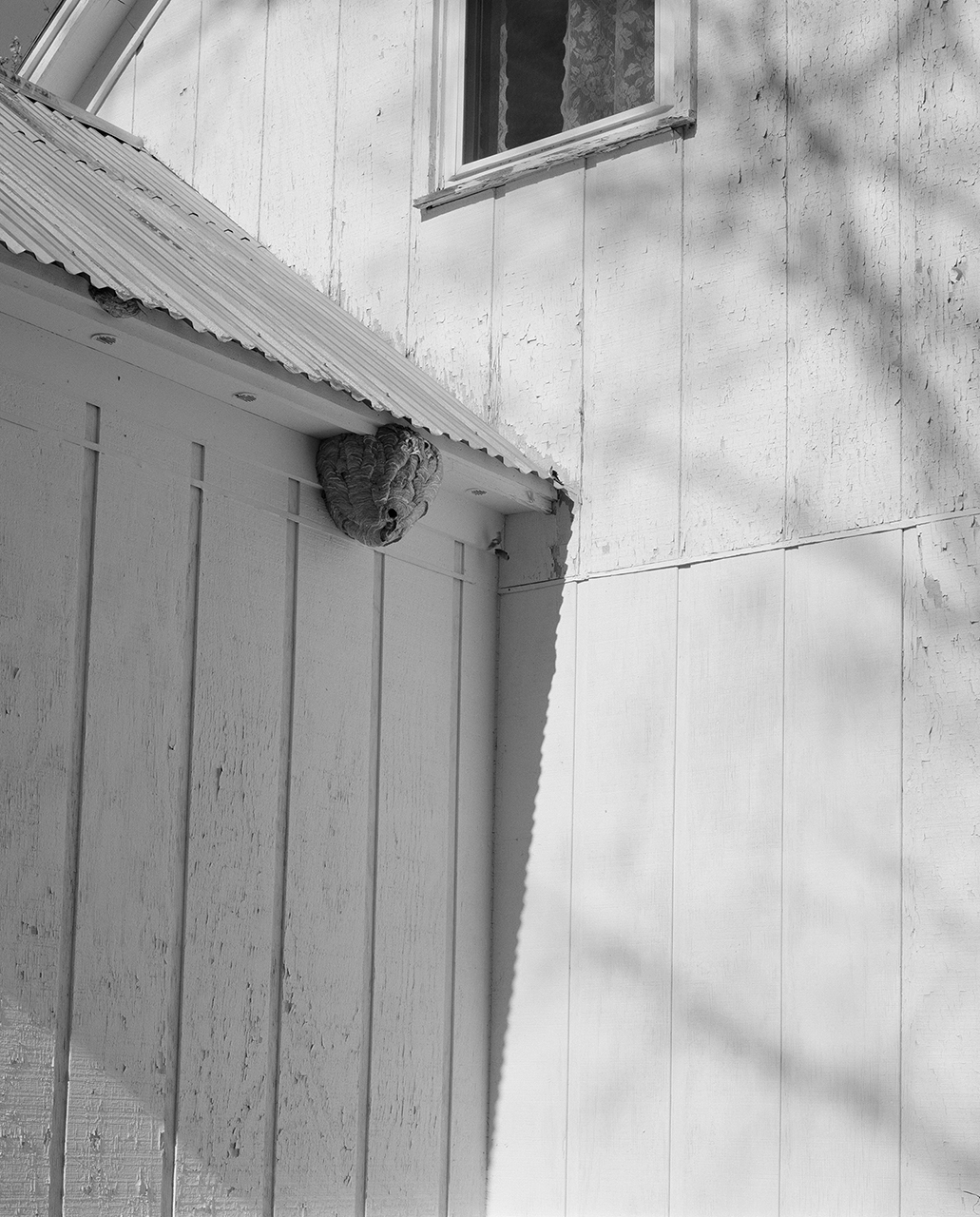

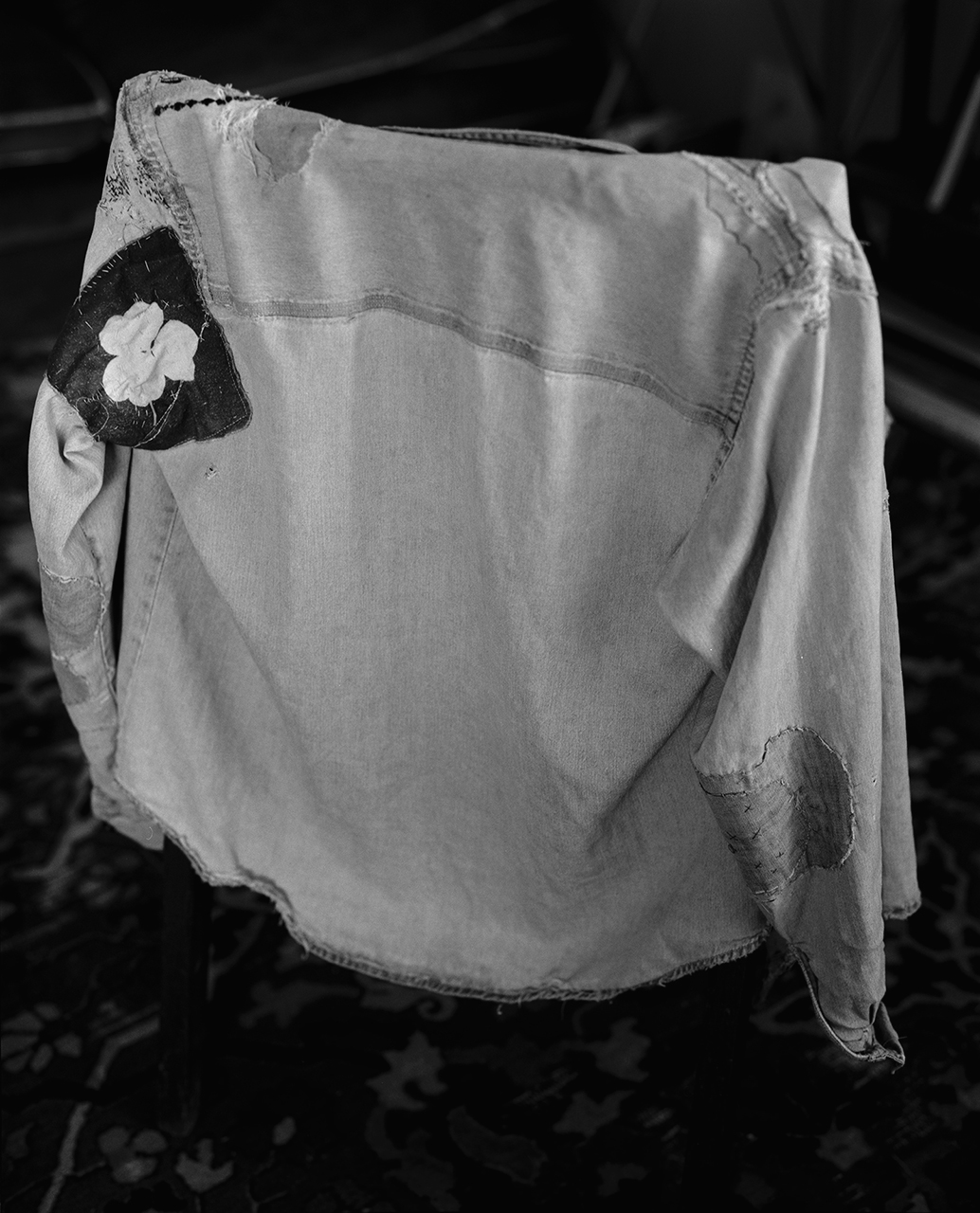


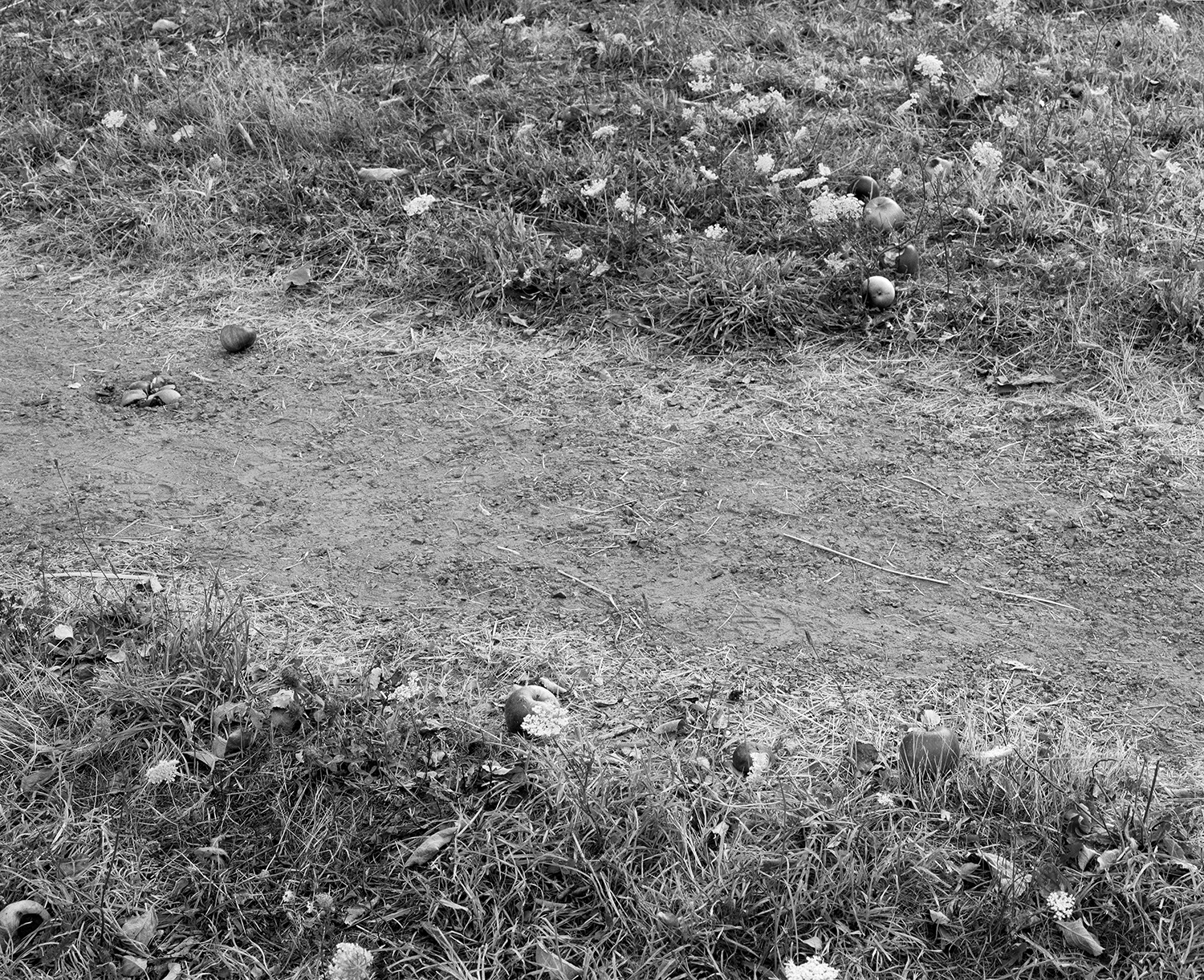
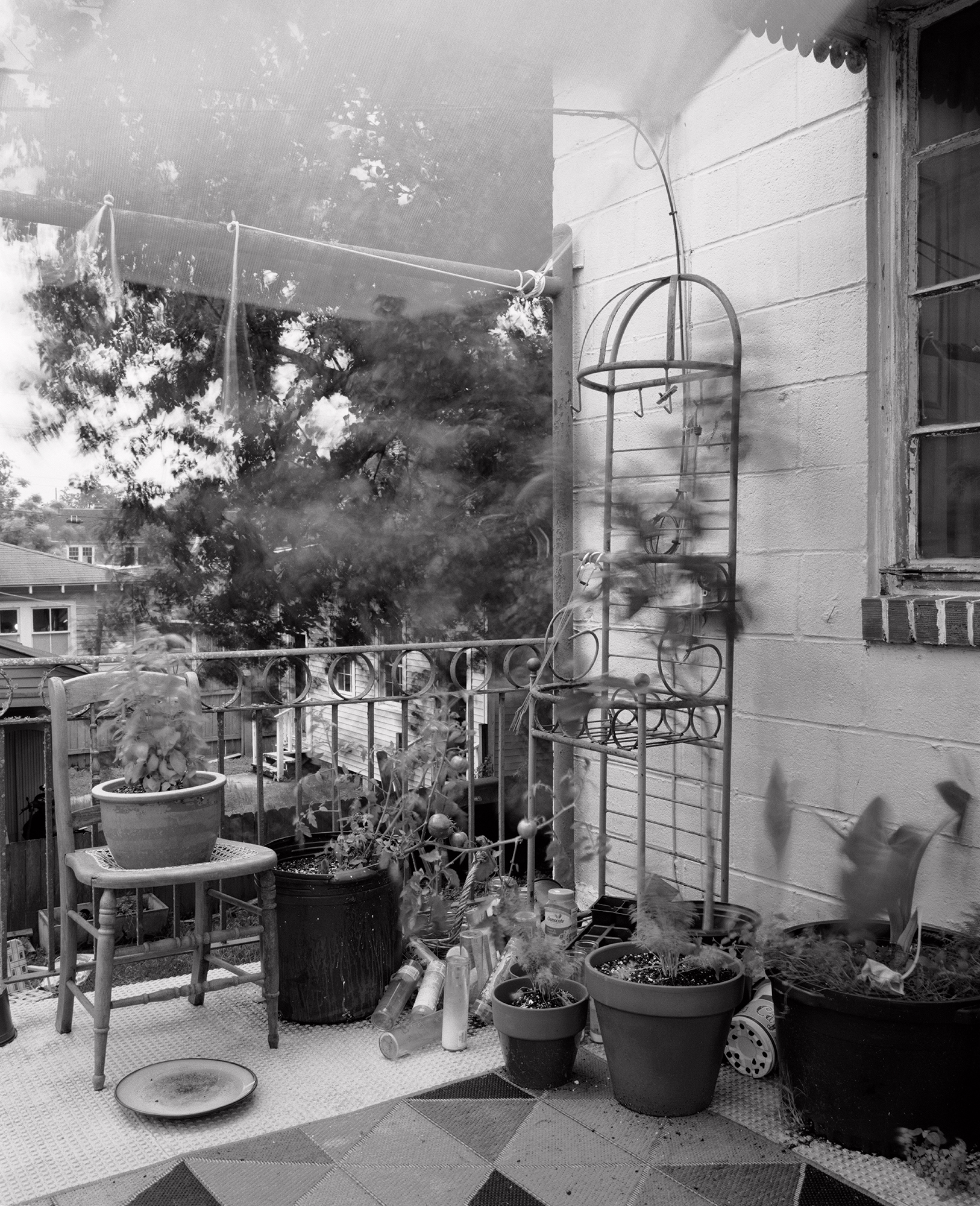
As a photographer, I seek out sediments, objects, imprints left behind, and things built up unintentionally. I am enchanted by examining these traces. Our lives are shaped by our environs and, in time, we too have altered them. The Dictionary of Geological Terms states that sediment is “solid fragmental material transported and deposited by wind, water, or ice... that forms in loose unconsolidated layers." Sediments of daily life come to rest in many of these scenes. Fragmental material forming loose layers also could describe how this body of photographs fits together; marks on personal spaces are echoed in landscapes. Wax dripping on a solitary candle matches the massive icicles of a frozen waterfall on an unusually cold Oregon day, a space heater glows like the sun, or a hand becomes a landscape.
Like images from the early industrial period, when we began the habits that would most drastically change our environment, my images are made slowly. Photographs can appear instantaneous—a moment snatched out of the river of time, the essence of an event distilled into one frame and rising above the rest—but they are made up of rays of light that must collect on silver halide crystals. In places this temporal process becomes visible—the hazy shape of swaying foliage in a storm or swirling reflections gathering cloud-like on the surface of slow-moving water. It is images like these, that collapse or accumulate time that draw me in. I believe there is value in examining the makeup of our everyday lives. The world presented here is a precarious world, one that contains what art historian Donato Loia described as "a shared condition of vulnerable life."
Like images from the early industrial period, when we began the habits that would most drastically change our environment, my images are made slowly. Photographs can appear instantaneous—a moment snatched out of the river of time, the essence of an event distilled into one frame and rising above the rest—but they are made up of rays of light that must collect on silver halide crystals. In places this temporal process becomes visible—the hazy shape of swaying foliage in a storm or swirling reflections gathering cloud-like on the surface of slow-moving water. It is images like these, that collapse or accumulate time that draw me in. I believe there is value in examining the makeup of our everyday lives. The world presented here is a precarious world, one that contains what art historian Donato Loia described as "a shared condition of vulnerable life."